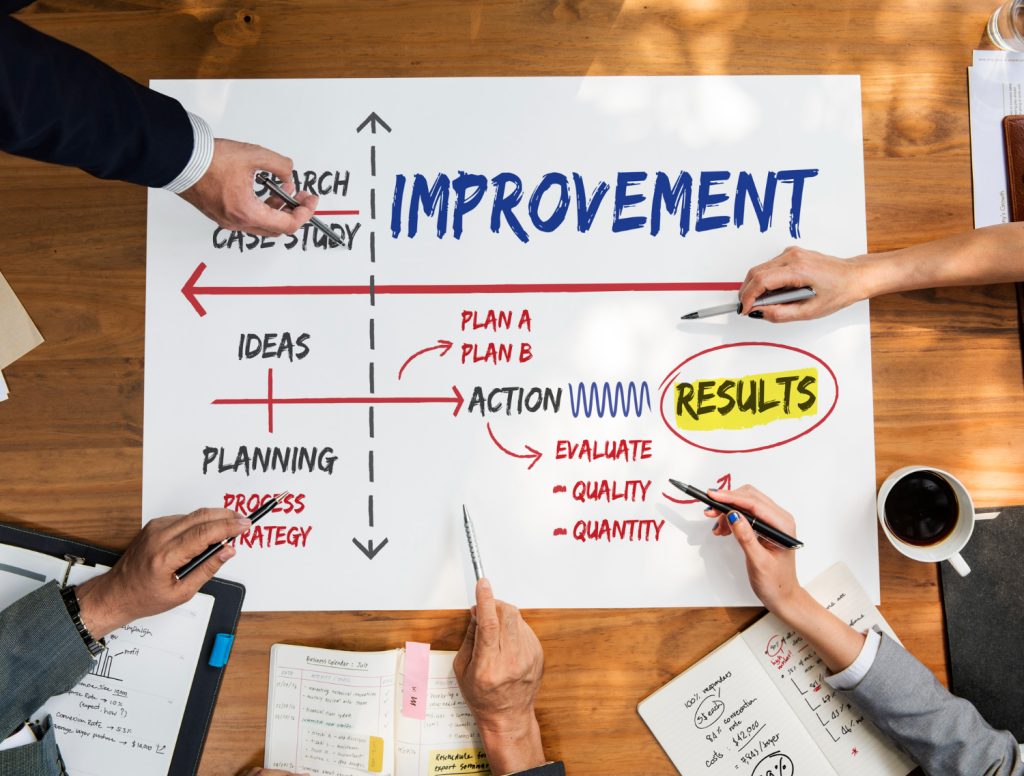 Many organizations being IATF 16949 certified still struggles with Continuous improvement (CI) activities. Many organizations treat the standard as a paper requirement to obtain certification. In reality, the standard requires a proactive mindset and consistent daily practice.
Many organizations being IATF 16949 certified still struggles with Continuous improvement (CI) activities. Many organizations treat the standard as a paper requirement to obtain certification. In reality, the standard requires a proactive mindset and consistent daily practice.
Organization who embeds and practices the guideline to fulfil the intend of the requirements are treating the standard as a CI tool. This will help the organizations to achieve operational excellence and reduce cost of poor quality and enhance delivery operation and achieve customer satisfaction.
The first key tool is Risk based thinking, which organizations incorporates into every step, from setting their scope to defining each process. PFMEA is a tool that embeds Risk based thinking in each step from start to finish. Organizations can anticipate failure mode and risk and plan ahead of time. A preventive and Proactive Tool in implementing Continuous Improvement strategy.
Root Cause Analysis (RCA) is another tool of CI, if incorporated properly can eliminate reproduction of defect, eliminate repeat issues. While applying RCA strategy it is important to keep in mind that the strategy should be applied on the real problem not on the symptom. Failure to use RCA tool effectively is when organization don’t follow problem analysis phase and jump on symptoms to carryout Root Cause Analysis. Therefore, if symptoms get treated instead of real problem, the symptom will be cured temporary, but the same problem will arise again creating repeat issue, Resulting in poor performance and high Cost of Poor Quality. 8D Problem-Solving is another Structured tool for complex nonconformities. It helps to define each stage of failure and actions needed to eliminate the issue from arising again. It places validation strategies in place that validates system effectiveness.
Plan, Do, Check, Act cycle is the foundation of the Quality Management System. It is the framework around which all the processes in the organization revolves around. The clauses are arranged in the PDCA cycle format, with all main processes and their sub-processes organized according to the PDCA cycle. PDCA Cycle reinforce Continuous Improvement framework into the system. In this cycle you are continually evaluating the performance and areas that needs improvement and taking actions to improve the result for future actions. Statistical Process Control (SPC) is another tool that helps detect variation in the process. SPC can help predict and prevent failure from happening in real time if used correctly.
Continuous improvement is not a single person job or a single action. It is a combined team effort. Employee involvement from top to down approach plays a vital key in implementing continuous improvement strategy otherwise it will be only a piece of paper for the organization. Employee involvement is also part of Quality Management System Principle. Employees should be encouraged to present ideas for improvement and should be acknowledged this develops and builds process ownership. All improvements should be tracked and reviewed, and actions should reflect through process, procedure, SOP change.
Example: Kadmar Consultants helped a client implement Integrated Complaint Handling System that had CI incorporated in it. From small to large nonconformity or deviation, everything was fed into the complaint handling system and with proper tool as defined above were used to eliminate repeat issue. DMR came down from 20% to 4%.
PDCA Cycle monitoring and taking actions against finding is actually Continuous Improvement. Therefore, the most important phase in the Quality Management System standard is to track all the KPIs of all the processes including the stakeholders that is supplier and employee performance. Continuous evaluation of customer satisfaction and feedback. In case of nonconformity or gap actions should be taken to bridge the gap and eliminate the nonconformity from the roots. The action should result in updates of procedures, process map, process itself, work instructions, SOPs, and training the most important step should not be left behind. Further based on audit findings, update the roadmap and process.
Conduct management is the process through which Evaluation phase takes place and effectiveness of Continuous Improvement depends on effectiveness of Management Review. The Management Review process validates that the organization is achieving its intended purpose and that it has implemented all necessary actions to sustain it.
Our Approach: Kadmar Consultants guide and provide services to the organizations from initial assessment to full IATF certification readiness, ensuring they are OEM-ready and audit-compliant from day one. Build a clear, actionable compliance roadmap with Kadmar and accelerate your IATF certification journey.
Kadmar Consultants specialize in simplifying certification. Our experts provide:
Take the First Step Today
If you’re preparing for IATF 16949 certification, don’t go in blind. We build businesses and help them grow. We make sure Quality Management System is embedded in the organization that helps operational excellence. IATF 16949 and ISO 9001:2015 is not just a paper document but a living standard.